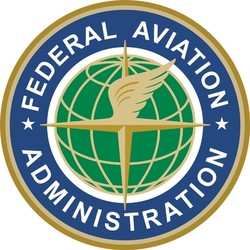Sat, Jan 12, 2013
Raises Concerns About Erosion Of Skills Due To Autopilot Use
A recent FAA analysis of flight operations data (including normal flight operations, incidents, and accidents) has identified an increase in manual handling errors. The FAA believes maintaining and improving the knowledge and skills for manual flight operations is necessary for safe flight operations, and has issued a Safety Alert for Operators (SAFO) encouraging operators to promote manual flight operations when appropriate.

According to the SAFO, modern aircraft are commonly operated using autoflight systems (e.g., autopilot or autothrottle/autothrust). "Unfortunately, continuous use of those systems does not reinforce a pilot’s knowledge and skills in manual flight operations. Autoflight systems are useful tools for pilots and have improved safety and workload management, and thus enabled more precise operations. However, continuous use of autoflight systems could lead to degradation of the pilot’s ability to quickly recover the aircraft from an undesired state."
Operators are encouraged to take an integrated approach by incorporating emphasis of manual flight operations into both line operations and training (initial/upgrade and recurrent). Operational policies should be developed or reviewed to ensure there are appropriate opportunities for pilots to exercise manual flying skills, such as in non-RVSM airspace and during low workload conditions. In addition, policies should be developed or reviewed to ensure that pilots understand when to use the automated systems, such as during high workload conditions or airspace procedures that require use of autopilot for precise operations. Augmented crew operations may also limit the ability of some pilots to obtain practice in manual flight operations. Airline operational policies should ensure that all pilots have the appropriate opportunities to exercise the aforementioned knowledge and skills in flight operations.
The FAA recommends that Directors of Operations, Program Managers, Directors of Training, Training Center Managers, Check Pilots, Training Pilots, and flightcrews should be familiar with the content of this SAFO. They should work together to ensure that the content of this SAFO is incorporated into operational policy, provided to pilots during ground training, and reinforced in flight training and proficiency checks.
More News
Also: New Lakeland Fly-in!, Gleim's DPE, MOSAIC! Nearly three-quarters of a century in the making, EAA is excited about the future… especially with the potential of a MOSAIC>[...]
Estimated (EST) -When used in NOTAMs “EST” is a contraction that is used by the issuing authority only when the condition is expected to return to service prior to the >[...]
Aero Linx: Regional Airline Association (RAA) Regional airlines provide critical links connecting communities throughout North America to the national and international air transpo>[...]
The Airplane Broke Up In Flight And Descended To The Ground. The Debris Path Extended For About 1,435 Ft. Analysis: The pilot, who was the owner and builder of the experimental, am>[...]
From 2015 (YouTube version): History Comes Alive Thanks to A Magnificent CAF Effort The story of the Douglas C-47 named, “That’s all Brother,” is fascinating from>[...]
 Airborne 07.21.25: Nighthawk!, Hartzell Expands, Deltahawk 350HP!
Airborne 07.21.25: Nighthawk!, Hartzell Expands, Deltahawk 350HP! ANN's Daily Aero-Term (07.27.25): Estimated (EST)
ANN's Daily Aero-Term (07.27.25): Estimated (EST) ANN's Daily Aero-Linx (07.27.25)
ANN's Daily Aero-Linx (07.27.25) NTSB Final Report: Luce Buttercup
NTSB Final Report: Luce Buttercup Classic Aero-TV: 'That's All Brother'-Restoring a True Piece of Military History
Classic Aero-TV: 'That's All Brother'-Restoring a True Piece of Military History



